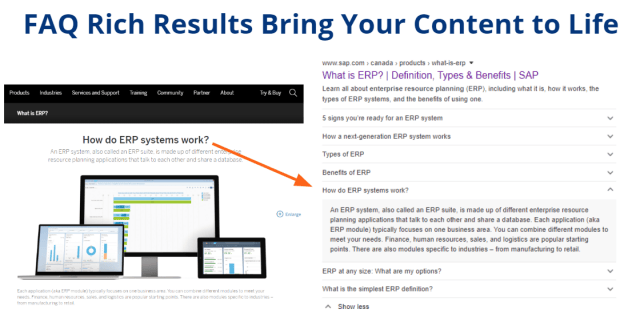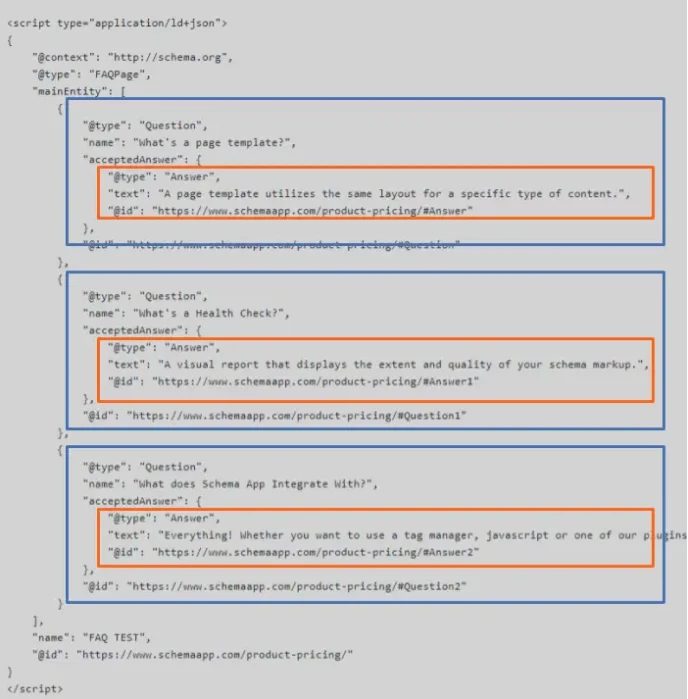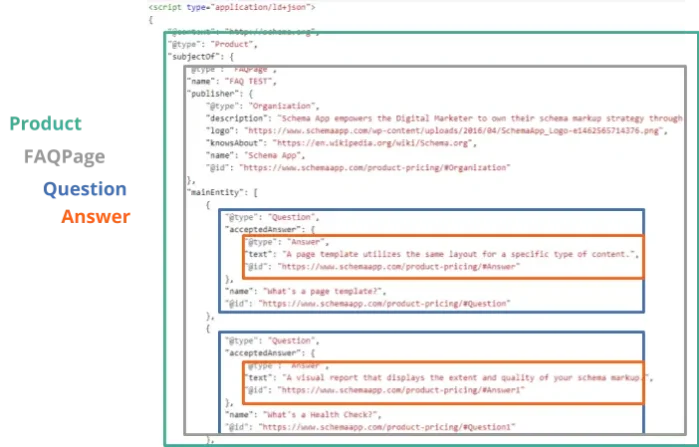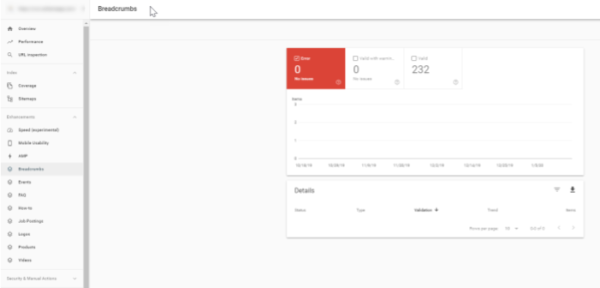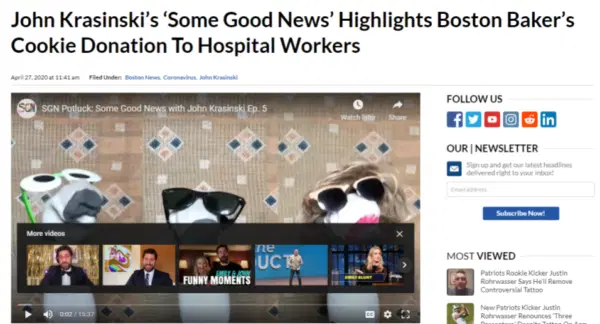On April 30th, 2020, Martha van Berkel (CEO at Schema App) and Jeffrey Burns (Customer Success Team Lead) presented “Stand Out in Search with FAQ Rich Results”. They covered how Frequently Asked Questions on your website can attract more customers using an advanced SEO strategy called schema markup.
Below, you’ll find notes specific to the Q&A portion of the webinar, providing answers to questions like: what constitutes an FAQ; what’s the value of marking up FAQs; and how can FAQs be marked up? The webinar itself also digs into schema markup, how it drives business results, and recent news about schema markup, so we encourage you to give it a listen!
Want to apply some of these advanced FAQ strategies?
Frequently Asked Questions and Schema Markup
The article below covers the following topics:
- What constitutes an FAQ
- What is the value of FAQ markup
- How to test if your page is eligible for the FAQ rich result
- How to find the Google Documentation on FAQs
- Best practices and answers to common questions
- Instructions on how to:
- Structure a basic “FAQPage”
- Tell search engines that your FAQ page is “about” a Product
- Tell search engines that your FAQ page is “about” an Organization
- Add FAQs about a Product or a Service to their respective pages
- Mark up a Blog Posting (or any “CreativeWork” schema.type) that contains FAQ content
- Mark up a Collection Page of Products or Services that contains both FAQ content and HowTo content
- How to know if the FAQ markup working
- Best Practices for great schema markup
- Example of how to use strong connectors for connected schema markup
What constitutes an FAQ?
An FAQ is a list of questions and answers pertaining to a particular topic. It can exist as a standalone FAQ Page, or it can be embedded in other pages that are the subject of the FAQ (E.g. A Product page that contains FAQs or a Collection Page that contains FAQs).
What is the value of FAQ markup?
The rich results associated with an FAQ can bring your content to life, and take up additional space on a page. It can also provide users with information directly within search results which may reduce your customer support costs. Here is an example of how FAQ content on a web page can translate into an FAQ rich result in search:
Can I test to see if my page is eligible for the FAQ rich result?
Yes, you can use Google’s Rich Result Testing tool. In addition to seeing if your content is eligible, you’ll get a preview of the rendered JSON-LD that Google will see, and notifications of any page loading issues.
Where can I find the Google Documentation on FAQs?
The Google Search Gallery outlines the requirements to qualify for rich results. Today, there are two requirements. You must show the:
- Full text of a question
- Full text of an answer
The documentation also includes best practices:
- Use FAQPage if your page has a list of questions with answers written by the site itself, with no way for users to submit alternative answers.
- There should be only one answer per question.
- Include the whole text of both the question and answer.
- All FAQ content must be visible to the user.
- If an FAQ is repeated across your site, only mark it up once.
- Don’t mark up an FAQ that includes obscene, profane, sexually explicit, violent, illegal or hateful content.
- Use Q&A instead of FAQ if your page has 1 question with multiple answers (like a community forum).
- Don’t use FAQPage for advertising purposes.
I still want to drive traffic to my website. How can I link to my website from the answer in the FAQ?
Use HTML tags within your answer text. You can make words bold, have a header, create a list or make part of your text clickable! Just wrap the text you want to be clickable with an anchor tag so that people can click through to your site from the SERP.
Common questions regarding FAQs include:
- Can I mark up a single question and answer? Yes
- Can I put an FAQ anywhere on the page? Yes
- Is there a limit to the length of an answer? No
- Is there a limit to the number of FAQs you can have on a page? No
Adding Schema Markup to Your FAQs
Example 1: How to add schema markup to a basic FAQ page:
- The series of questions and answers should be captured in a container within the page.
- Using the schema.org type, FAQPage, we can nest each answer within its associated question.
- Use the mainEntity property to connect to
- Schema.org type = Question, with
- Schema.org property, name = the text of the question
- Schema.org property, acceptedAnswer = links to
- Schema.org type = Question, with
- Use the mainEntity property to connect to
- Repeat Step 2 for every FAQ that exists on your FAQPage
Example 2: How to tell the Search Engines that your FAQ page is “about” a Product:
From the “FAQPage” type, locate the property, “about” and create a new Product data item or link to an existing one. You would nest your FAQs using the “mainEntity” property and then following the same instructions captured in “Example 1” for marking up your questions and answers.
Example 3: How to tell the Search Engines that your FAQ page is “about” an Organization:
Similar to Example 2, except that you have a few more options. You could create linkages back to the “Organization” data item using the following properties: “about”, “publisher”, “author”.
Example 4: How to add FAQs about a Product or a Service to the Product or Service page:
- Mark up your Product page (which is the primary entity of the page)
- Use the “subjectOf” property to create a nested data item for the schema.org type “FAQPage”.
- Nest your FAQs using the “mainEntity” property, then follow the same instructions captured in “Example 1” for marking up your questions and answers.
Example 5: How to markup a blog posting (or any “CreativeWork” schema.type) that contains FAQ content:
- The primary entity is the “BlogPosting” schema.org type
- Use the “hasPart” property to create a nested data item for the schema.org type “FAQPage”
- Follow the instructions in “Example 1” to mark up the questions and answers.
Example 6: How to mark up a Collection Page of Products or Services that contains FAQ content and HowTo content:
- The primary entity is the “CollectionPage” schema.org type
- Use the “about” property to connect to your “Product” or “Service” data item.
- Use the “hasPart” property to create a nested data item for the schema.org type “FAQPage”.
- Follow the instructions in “Example 1” to mark up the questions and answers.
- Use the “hasPart” property to create a nested data item for the schema.org type “HowTo”.
How do I know if the FAQ markup working?
Use the Google Search Console Enhancement Report. Note that you’ll only see results if Google has crawled and indexed your site and found the FAQ markup.
You can also check the Google Search Performance Report for errors and warnings.
Best Practices for Schema Markup
Some of our best practice recommendations for excellent schema markup are:
- Do not put the same schema markup on every page of your website. Your schema markup should reflect the content on the page.
- Do not create islands of schema markup. In other words, connect your pages using schema markup to tell a story.
- Nest markup under the primary topic of the page so that the search engines are clear about the primary topic of the page.
- Use strong connectors such as “about”, “mentions”, “subjectOf” and “hasPart”.
Example: How to use strong connectors for connected schema markup:
An example: If we were going to mark up the following article, we would choose the schema.org type, “NewsArticle” and in addition to marking up some of the standard properties associated with “NewsArticle” we could also mark up:
-
- “about” = Some Good News (VideoObject)
- “mentions” = John Krasinski (Person)
- “sameAs” = Wiki: John_Krasinski
In leveraging some of these strong connector properties, we have been able to tell the search engines that the NewsArticle is “about” the YouTube video and that it mentions a “Person” named, “John Krasinski” who is the same John Krasinski in the referenced Wikipedia link. The associated code would have the various schema.org properties, nested (or organized under) the “NewsArticle”.
Create FAQPage Schema Markup using the Schema App Editor
Mark up your FAQ content using the Schema App Editor in minutes! The Schema App Editor is a do-it-yourself structured data solution that lets you mark up your content, page-by-page, at your own pace. We put together a step-by-step tutorial and training video for the Schema App Editor here.
Frequently asked questions are a great way to engage with users in search results, before they even enter your website. If you need help getting started with your structured data markup, set up a strategy call with our technical experts today!
Start reaching your online business goals with structured data.

